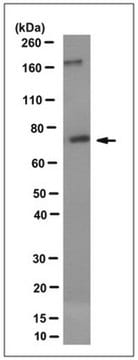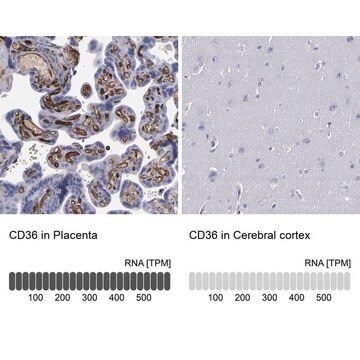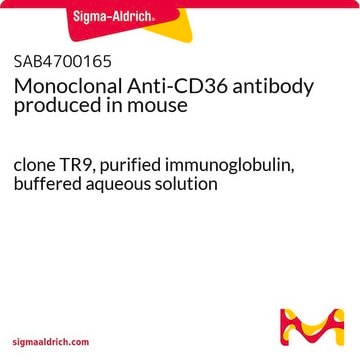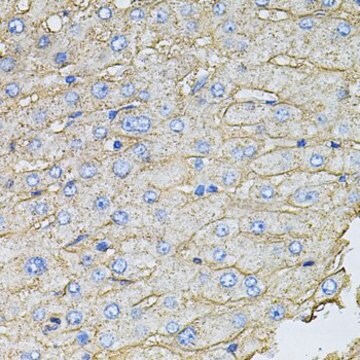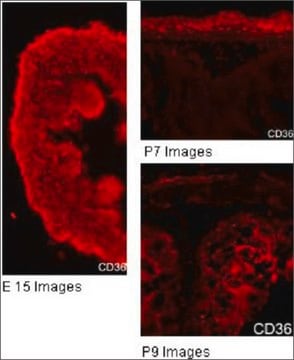MABF3056
Anti-CD36 Antibody, clone ZND36-6
About This Item
Produits recommandés
Source biologique
rat
Niveau de qualité
Conjugué
unconjugated
Forme d'anticorps
purified antibody
Type de produit anticorps
primary antibodies
Clone
ZND36-6, monoclonal
Poids mol.
calculated mol wt 52.70 kDa
Produit purifié par
using protein G
Espèces réactives
mouse
Conditionnement
antibody small pack of 100 μg
Technique(s)
flow cytometry: suitable
immunocytochemistry: suitable
inhibition assay: suitable
Isotype
IgG2a
Séquence de l'épitope
Extracellular domain
Numéro d'accès Protein ID
Numéro d'accès UniProt
Conditions d'expédition
dry ice
Modification post-traductionnelle de la cible
unmodified
Informations sur le gène
rat ... Cd36(12491)
Description générale
Spécificité
Immunogène
Application
Evaluated by Immunocytochemistry in NIH 3T3 cells.
Immunocytochemistry Analysis: A 1:25 dilution of this antibody detected CD36 in NIH 3T3 cells.
Tested Applications
Flow Cytometry: A representative lot detected CD36 in Flow Cytometry applications (Tsugita, M., et al. (2017). Cell Rep. 18(5):1298-1311; Omori, S., et al. (2021). Cell Rep. 34(6):108734).
Inhibition Assay: A representative lot of this antibody partially inhibited IL-1b secretion by bone marrow derived macrophages. (Tsugita, M., et al. (2017). Cell Rep. 18(5):1298-1311).
Note: Actual optimal working dilutions must be determined by end user as specimens, and experimental conditions may vary with the end user
Forme physique
Stockage et stabilité
Autres remarques
Clause de non-responsabilité
Not finding the right product?
Try our Outil de sélection de produits.
Code de la classe de stockage
12 - Non Combustible Liquids
Classe de danger pour l'eau (WGK)
WGK 2
Point d'éclair (°F)
Not applicable
Point d'éclair (°C)
Not applicable
Certificats d'analyse (COA)
Recherchez un Certificats d'analyse (COA) en saisissant le numéro de lot du produit. Les numéros de lot figurent sur l'étiquette du produit après les mots "Lot" ou "Batch".
Déjà en possession de ce produit ?
Retrouvez la documentation relative aux produits que vous avez récemment achetés dans la Bibliothèque de documents.
Notre équipe de scientifiques dispose d'une expérience dans tous les secteurs de la recherche, notamment en sciences de la vie, science des matériaux, synthèse chimique, chromatographie, analyse et dans de nombreux autres domaines..
Contacter notre Service technique